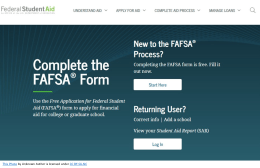What has changed about the FAFSA?
The FAFSA Simplification that has come out is effective starting with the 2024-2025 school year. The K-State Priority date to fill out the FAFSA for this time frame is now March 1, 2024. There are quite a few new changes and modifications that the new FAFSA has come out with:
- Instead of looking at the student’s Estimated Family Contribution (EFC), there is now a measure called the Student Aid Index (SAI) that will be used to determine a student’s aid eligibility instead. This new measure will allow K-State to identify students more accurately with their level of need.
- The FAFSA Simplification is intended to expand Pell Grant access for many students. There is data that shows a significant number of K-State students will become Pell Grant eligible for the first time starting in the 2024-2025 school year.
- In regards to primary or custodial parent, for dependent students whose parents are separated, the primary parent will be the parents who provides the greater portion of the student’s financial support and the one who is required to provide their information on the FAFSA form.
- The listing of net worth of a business will not be limited by the number of employees anymore, one will report all businesses no matter the size on the FAFSA form.
- Similarly, the listing of net worth of a farm will now include the net worth of family farms. The family’s primary residence will still be excluded, but other factors such as fair market value of land, buildings, livestock, unharvested crops, and machinery minus the debt held against these assets can be included.
- For more information visit our Office of Student Financial Assistance page.
Why should you fill out the FAFSA?
- Shows your college your ability to pay your tuition bills
As stated above, when a family completes the FAFSA, the resulting calculation is the Student Aid Index or SAI. With the SAI visible, colleges can better see if a family can pay for their college. The SAI may help some students in the admission process.
Many people may not realize that a college is a business and that colleges need various types of students to enroll in their targeted freshman classes. One of the factors in the admission and financial aid packaging decision is the amount of revenue each student can pay. The SAI is just an estimator of your family’s ability to pay. It does not mean a family can pay or will pay that amount.
- Become eligible for direct federal loans
By completing the FAFSA, no matter a family’s financial strength, the student will qualify for a Direct Federal Student Loan. The completed FAFSA requires the student or parent to be eligible for federal funds or loans.
Even if a high-income family does not qualify for the Direct Federal Subsidized Loans, submitting a FAFSA will make the student eligible for a Direct Unsubsidized Federal Loan.
- Repayment and forgiveness options
Creating the proper debt structure is vital since the loan type determines student loan repayment and forgiveness options.
Federal loans offer the most flexible repayment options. As stated above, completing the FAFSA allows the student to qualify for federal loans from the beginning.
- Establishing credit
Making an investment in your future can be chalked up as a good debt to have. Establishing credit is an important thing as a young adult and having manageable debt is a way to do that. Repaying student loans allows young adults to establish their own credit and credit scores.
Upcoming Events:
Love and Money – February 12th, 4:00-5:00pm at the Union in the Big 12 Room. Come join us and bring your significant other to partake in a workshop where you can learn how to merge your finances together. Our event features Peer Financial Counselor, RJ Salmen, and Personal Financial Planning Assistant Professor, Dr. Megan McCoy!

Halle Schindler
Graduate Assistant
Powercat Financial
www.k-state.edu/powercatfinancial
